Building a natural remedies book collection for Australian conditions requires more than just picking up popular international titles. Australia’s unique climate zones, distinctive native flora, and potential plant toxicities demand region-specific knowledge that generic herbal medicine guides simply can’t provide. Whether you’re establishing a small homestead, pursuing self sufficiency on rural acreage, or simply want reliable references for growing and using medicinal plants in Australian conditions, the right books become essential tools. This guide reviews the most valuable herbal medicine books for Australians, combining locally-focused references with adaptable international classics that genuinely work in our environment.
Natural Remedies Books Covered in This Guide
Australian-Focused Books:
- Medicinal Plants in Australia Volume 1: Bush Pharmacy by Cheryll Williams (2010)
- Australian Medicinal Plants by E.V. Lassak & T. McCarthy (2011)
- Medicinal Plants in Australia Volumes 2-4 by Cheryll Williams
International Classics Relevant to Australian Conditions:
- The Complete Herbal Tutor by Anne McIntyre (2019)
- The Herbal Medicine-Maker’s Handbook by James Green (2000)
- Medical Herbalism by David Hoffmann (2003)
- Rosemary Gladstar’s Medicinal Herbs: A Beginner’s Guide (2012)
- The Complete Medicinal Herbal by Penelope Ody (1993)
- Peterson Field Guide to Medicinal Plants and Herbs (3rd Edition, 2014)
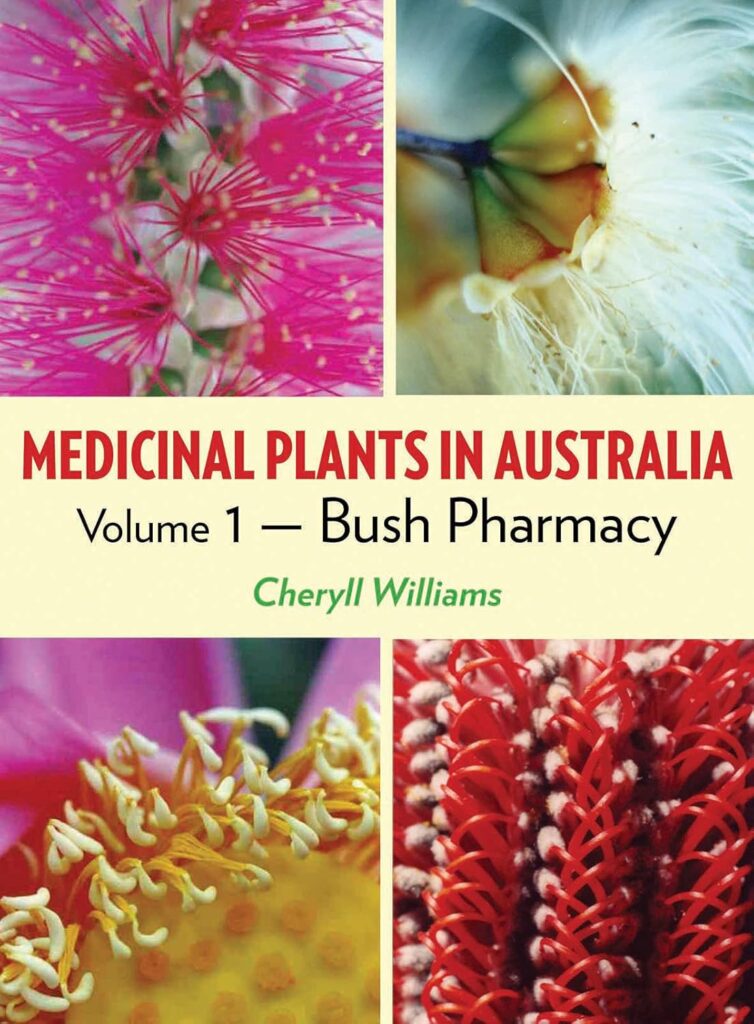
Why Australian Conditions Should Influence Your Choice of Natural Remedies & Herbal Medicine Books
Australian growing conditions differ dramatically from the European and North American climates where most herbal medicine traditions developed. What thrives in English hedgerows or American woodlands often struggles in Australian heat, drought, and intense sunlight. Native Australian plants present their own challenges, many lack the extensive research documentation available for Northern Hemisphere species, and some carry toxicity risks that don’t exist with their overseas counterparts.
Temperature extremes shape what you can realistically grow and harvest. Coastal humidity in Queensland creates different possibilities than inland New South Wales frost zones or Western Australian mediterranean climates. A book focused on British herb gardens won’t prepare you for managing plants through 40-degree summer days or prolonged drought periods. Understanding which international herbs adapt to Australian conditions, and which native plants offer similar therapeutic properties, determines whether your herbal medicine practice succeeds or wastes time and resources.
The sustainability and self-sufficiency goals driving many Australians toward herbal medicine depend on working with, not against, local conditions. Books that acknowledge Australian realities, from water scarcity to bushfire risk, from native plant identification to introduced species management, provide frameworks that actually work in practice. Region-specific knowledge isn’t a luxury, it’s the foundation of effective herbal medicine in Australia.
Top Natural Remedies and Self Sufficiency Books
Medicinal Plants in Australia Volume 1: Bush Pharmacy by Cheryll Williams (2010)
Cheryll Williams’ Bush Pharmacy stands as the definitive Australian herbal medicine reference, meticulously documenting the medicinal history of Australia’s native flora from Aboriginal use through early European settlement to contemporary applications. The book covers plants including eucalypts, grass trees (Xanthorrhoea), sarsaparilla, sassafras, sandalwood, and uniquely Australian aromatics, combining historical records with modern research summaries that validate or refine traditional uses.
Williams brings over 25 years of clinical experience in herbal and nutritional medicine, and this depth shows in how she contextualises each plant’s therapeutic applications. Rather than offering superficial plant descriptions, Bush Pharmacy explains how European settlers learned from Aboriginal knowledge, how informal Australian materia medica developed, and how contemporary research supports or challenges historical applications. The book excels at bridging traditional wisdom with scientific evidence, making it invaluable for practitioners seeking evidence-based approaches to native Australian plants.
For Australian readers, this is essential reading precisely because it focuses on flora you’ll actually encounter, grow, or forage locally. The historical narrative structure makes complex botanical information accessible while maintaining rigorous attention to pharmacological detail. This is the first volume in Williams’ four-volume Medicinal Plants in Australia series, each building on the comprehensive foundation established here. Available through Australian bookshops and online retailers, Bush Pharmacy belongs on every serious Australian herbalist’s shelf.
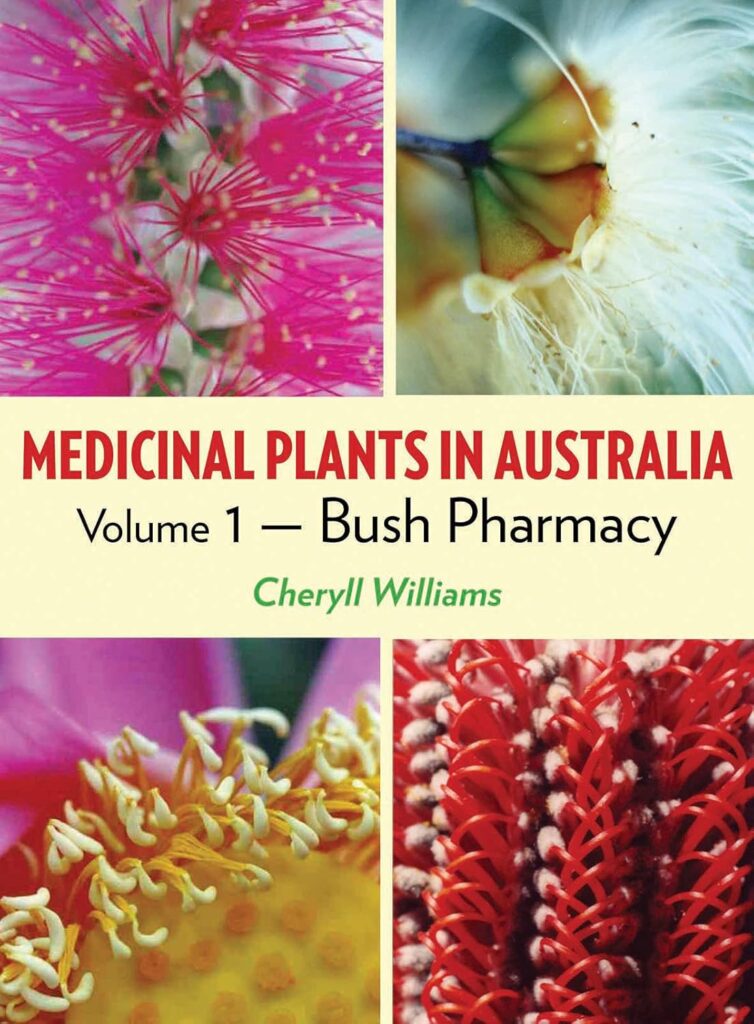
Australian Medicinal Plants by E.V. Lassak & T. McCarthy (2011, 2nd Edition)
Lassak and McCarthy’s Australian Medicinal Plants provides comprehensive coverage of nearly 500 native Australian species, organised by therapeutic use categories including fevers, painkillers, antiseptics, and digestive disorders. First published in 1983 and substantially revised for the 2011 second edition, this book combines Aboriginal traditional knowledge with detailed information on known pharmacological constituents, preparation methods, and where to find each species.
The strength of Australian Medicinal Plants lies in its systematic approach. Rather than presenting plants alphabetically or taxonomically, organising by therapeutic application helps readers identify which native species might address specific health concerns. Each entry includes botanical descriptions, distribution information, Aboriginal and early settler uses, known active compounds, and preparation guidelines. This practical structure makes the book valuable both as a field identification guide and a home remedy reference.
Erich Lassak served as Honorary Research Associate at the Royal Botanic Gardens Sydney, bringing botanical rigour to the project, while Tara McCarthy contributed ethnobotanical expertise. The 2011 edition includes updated research and expanded coverage compared to earlier versions, making it the current standard reference for Australian native medicinal plants. The book includes colour photographs and botanical illustrations by Betty Hinton, aiding in accurate plant identification, critical for safety when working with native species.
For readers building self-sufficiency on Australian properties, this book identifies which native plants already growing on your land might have medicinal applications, reducing reliance on imported species that may struggle in local conditions. Available in both hardcover and paperback editions through major Australian bookstores.

The Complete Herbal Tutor by Anne McIntyre (2019 Revised Edition)
While not Australia-specific, Anne McIntyre’s Complete Herbal Tutor provides the theoretical and practical foundation necessary for understanding herbal medicine as a discipline. The revised 2019 edition offers in-depth knowledge of herbal practice and theory, including 383 pages covering herbal history, plant chemistry, consultation methods, pharmacy techniques, a materia medica of over 150 commonly used herbs, treatment approaches for different body systems, and guidance on growing, harvesting, and storing herbs.
McIntyre, a Fellow of the National Institute of Medical Herbalists with over 40 years of clinical experience, writes with authority but accessibility. The book’s value for Australian readers lies in its comprehensive coverage of herbs that do adapt to Australian growing conditions, including Mediterranean species like rosemary, lavender, and thyme that thrive in Australian climates, Asian herbs increasingly available through Australian nurseries, and European species suited to temperate Australian regions.
The Complete Herbal Tutor excels at explaining the “why” behind herbal medicine, plant chemistry, actions and energetics, interactions and contraindications, dosage principles for acute versus chronic conditions. This theoretical grounding prevents the cookbook approach that characterises lesser herbal guides, instead teaching readers to understand plants deeply enough to use them safely and effectively. The extensive materia medica provides detailed monographs on each herb’s properties, uses, preparations, and precautions.
The 2019 revised edition addresses contemporary concerns including herb-drug interactions, evidence from recent clinical studies, and sustainable harvesting practices. Beautifully illustrated with photographs from McIntyre’s own garden, the book serves both as learning text and ongoing reference. For Australian herbalists, pair this with locally-focused books to combine international herbal wisdom with region-specific plant knowledge.
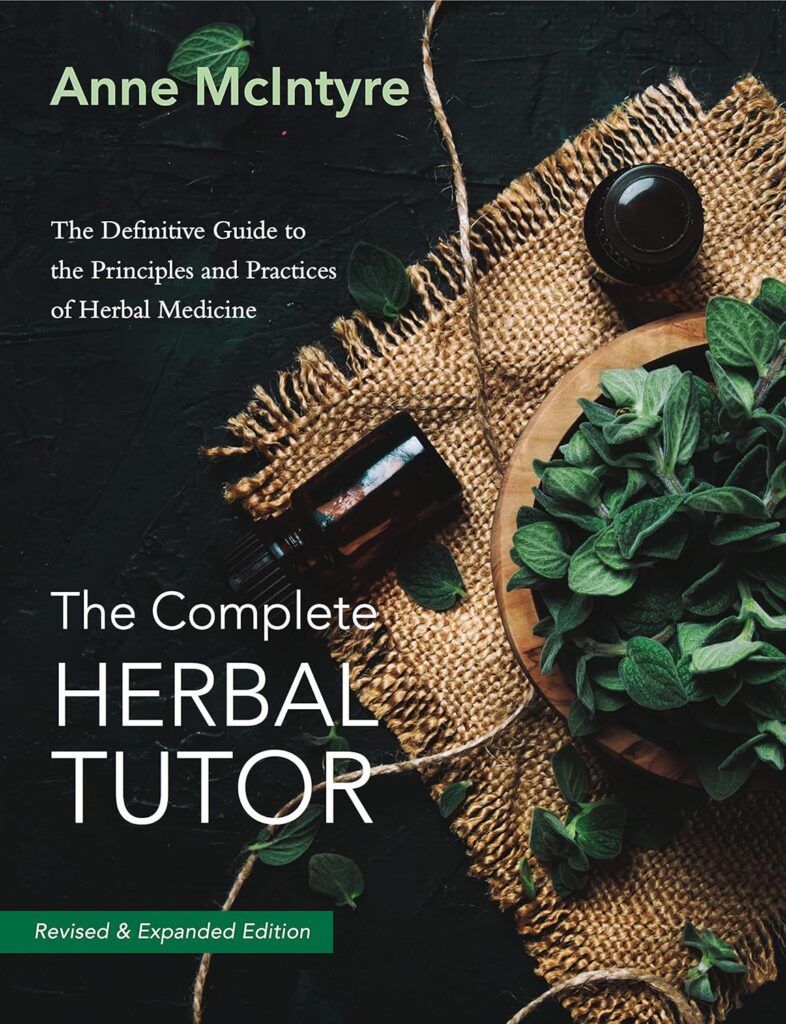
The Herbal Medicine-Maker’s Handbook by James Green (2000)
James Green’s Handbook focuses intensively on the practical craft of preparing herbal medicines, from tinctures and extracts to salves, oils, and syrups. While written for North American readers, the preparation techniques translate directly to Australian practice, and many of the herbs covered grow readily in Australian conditions or have native equivalents.
The book’s strength is its detailed, step-by-step guidance on medicine-making processes. Green explains not just how to make herbal preparations, but why different extraction methods work, how to calculate appropriate ratios and dosages, troubleshooting common problems in herbal pharmacy, and quality considerations for finished products. This depth makes it invaluable for readers moving beyond simply buying commercial herbal products to actually making their own medicines.
For self-sufficiency focused Australians, the Handbook provides the knowledge needed to transform home-grown or foraged plants into shelf-stable medicines. The book covers both fresh and dried plant preparations, important in Australian climates where preserving harvests through hot summers matters. Green’s folksy, accessible writing style makes complex pharmaceutical concepts understandable without sacrificing technical accuracy.
Australian readers will need to adapt some plant-specific information, substituting local species where North American ones don’t grow well here, but the core preparation methods apply universally. The book includes formularies for common conditions, though Australian users should cross-reference with local resources for appropriate native or well-adapted species. Available through international bookshops and online retailers.

Medical Herbalism by David Hoffmann (2003)
David Hoffmann’s Medical Herbalism serves as a bridge between traditional herbal practice and modern clinical applications. At over 600 pages, this comprehensive text covers therapeutics, body systems, specific conditions, materia medica, and preparation methods with the depth expected in professional herbal medicine education.
Hoffmann, trained in both Western and Chinese herbal traditions, brings an integrative perspective that considers herbs as part of holistic treatment strategies rather than simple symptom remedies. The book’s clinical focus makes it particularly valuable for readers serious about using herbs therapeutically rather than casually. Each body system receives detailed coverage explaining how herbs support physiological function, which herbs suit specific conditions, contraindications and precautions, and how to formulate effective combinations.
For Australian readers, Medical Herbalism works best as an advanced reference after establishing fundamental knowledge through more introductory texts. Many covered herbs either grow in Australia or have Australian equivalents, though readers must research local growing conditions and suppliers. The book’s systematic approach to herbal therapeutics teaches thinking patterns applicable regardless of which specific plants you access locally.
The extensive materia medica includes detailed monographs on several hundred herbs, each covering constituents, actions, indications, preparations, and dosage. While not light reading, Medical Herbalism rewards serious study for those pursuing herbal medicine beyond hobbyist level. Available through specialist herbal bookshops and online medical booksellers.
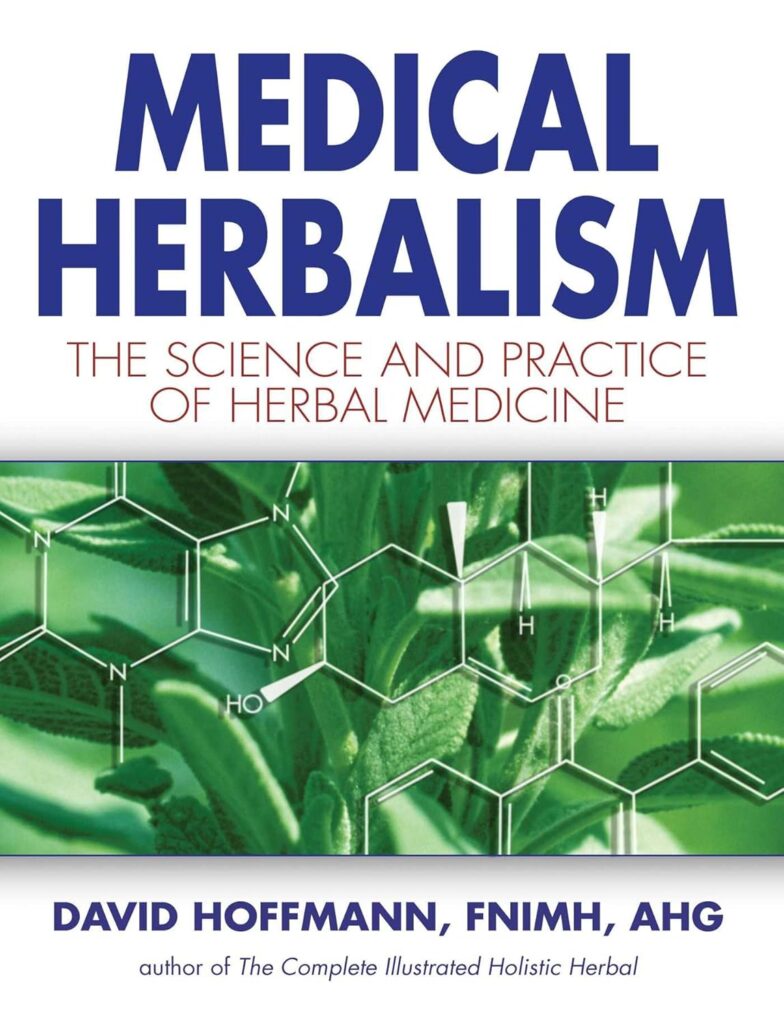
Medicinal Plants of Australia volumes 2-4 by Cheryll Williams
Following Bush Pharmacy, Cheryll Williams continued her comprehensive documentation of Australian medicinal plants through three additional volumes. Volume 2: Gums, Resins, Tannin and Essential Oils explores the therapeutic applications of Australian plant exudates and aromatic compounds, particularly relevant given eucalyptus oil’s international prominence. Volume 3: Plants, Potions and Poisons examines toxic Australian plants alongside medicinal ones, critical information for anyone foraging or growing native species. Volume 4: An Antipodean Apothecary completes the series with additional medicinal plant profiles and preparation guidance.
Together, these volumes provide unmatched depth on Australian herbal medicine. Williams’ clinical experience and research thoroughness make the series essential for anyone seriously pursuing Australian herbal practice. The volumes build on each other but can be consulted independently, each focuses on distinct aspects of Australian medicinal flora. Richly illustrated and extensively referenced, the series represents years of research distilling historical records, Aboriginal knowledge, and contemporary scientific studies.
For self-sufficient property owners, the series helps identify medicinal potential in native vegetation already present on land, reducing dependence on exotic species. The inclusion of toxic plants alongside medicinal ones promotes safe foraging and identification, addressing one of the major risks in Australian bushland herb gathering. Available through Australian botanical and herbal bookshops, the complete series represents a significant investment but provides lifetime reference value.
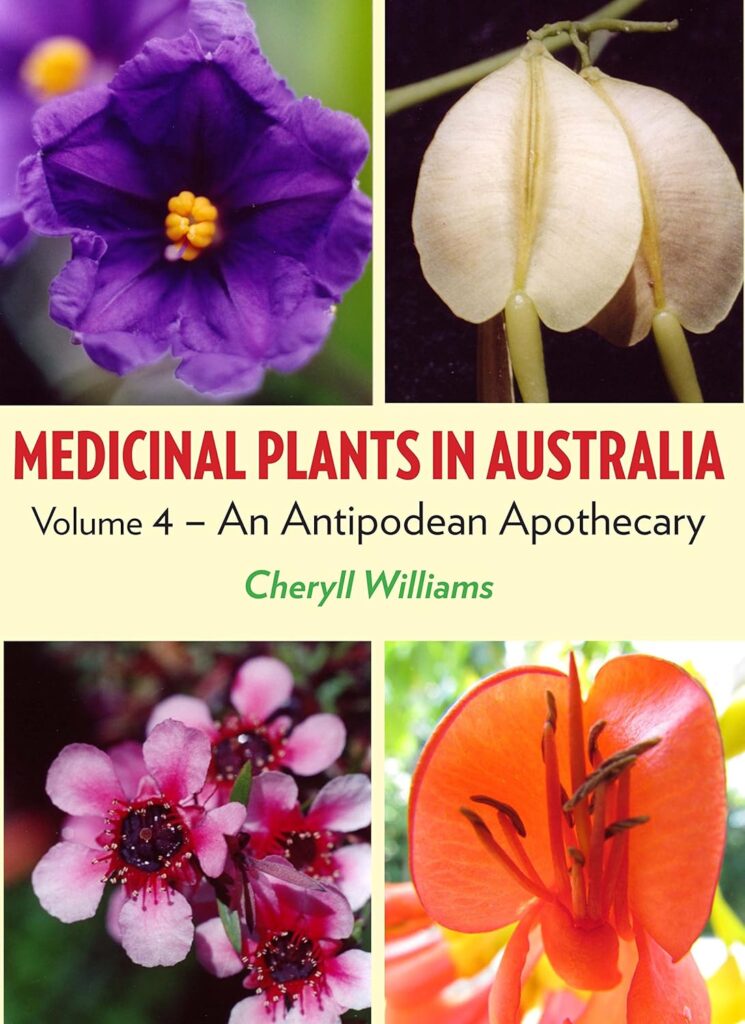
Rosemary Gladstar’s Medicinal Herbs: A Beginner’s Guide (2012)
Rosemary Gladstar’s beginner-focused guide covers 33 common medicinal herbs with clear, accessible instructions for growing, harvesting, and using each one. While written for an American audience, many of Gladstar’s featured herbs thrive in Australian conditions, particularly Mediterranean species like rosemary, lavender, sage, and thyme, and widely adapted herbs including calendula, chamomile, echinacea, and lemon balm.
The book’s value lies in its gentle, encouraging approach perfect for readers new to herbal medicine. Gladstar explains basic concepts without overwhelming beginners, provides simple recipes and preparations anyone can make, builds confidence through straightforward, achievable projects. Each herb profile includes growing tips, harvesting guidance, and several preparation methods, making the book both garden guide and medicine-making manual.
Australian readers will find that cool-climate herbs need adaptations for hot regions, some herbs mentioned don’t grow well in tropical areas, and local nurseries may stock different varieties than American sources. However, the core principles translate well, and most featured herbs either grow readily in Australian gardens or have suitable local alternatives. The book works particularly well for southern Australian climates with cool winters.
Gladstar’s emphasis on sustainable harvesting, respectful plant relationships, and simple but effective preparations aligns well with self-sufficiency values. Her recipes focus on kitchen-friendly ingredients and equipment, avoiding the commercial-scale processing described in more technical texts. For Australians starting their herbal journey, this book provides an accessible entry point before progressing to more advanced or Australia-specific references.
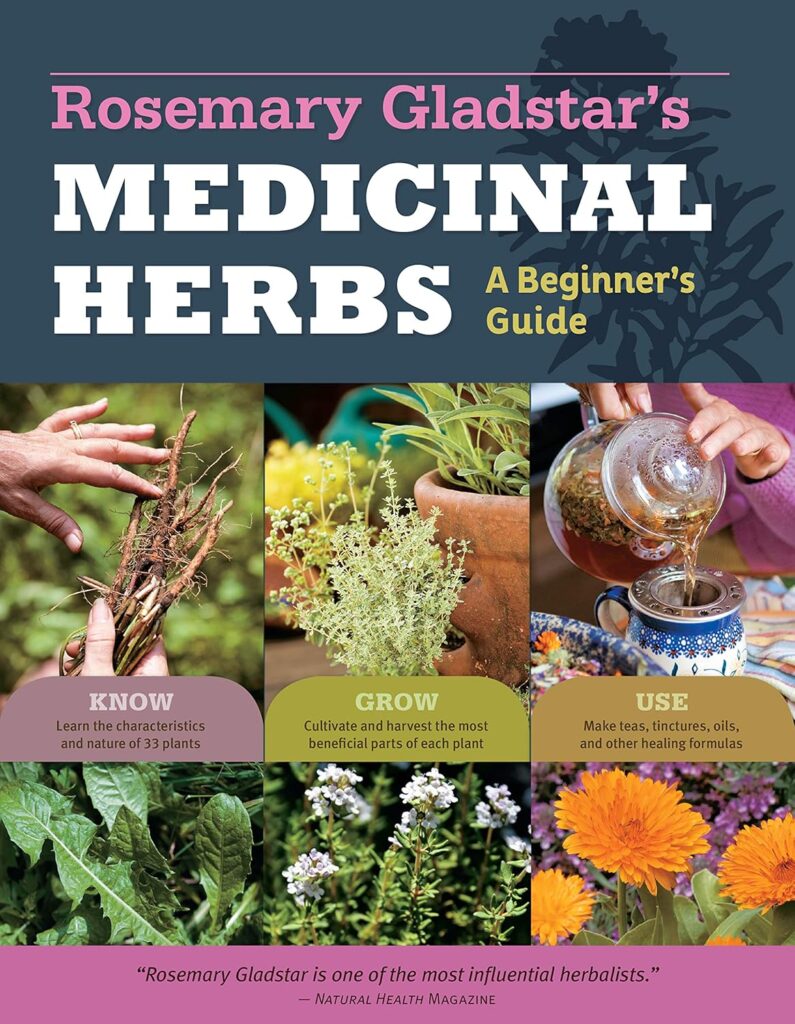
The Complete Medicinal Herbal by Penelope Ody (1993)
Penelope Ody’s Complete Medicinal Herbal combines a comprehensive materia medica with clear guidance on growing, harvesting, and preparing herbs. While showing its age (published 1993), the core information remains sound, and the book’s practical focus makes it enduringly useful. Ody covers over 120 key medicinal herbs with detailed profiles including cultivation requirements, harvesting methods, therapeutic actions, and specific applications.
The book includes substantial sections on preparing herbal medicines, treating common ailments, and growing medicinal plants in different climates. For Australian readers, the growing information requires adaptation, European climate advice needs adjusting for Australian conditions, but preparation methods and therapeutic applications remain relevant. Many featured herbs suit Australian temperate zones, and Ody’s growing guidance helps readers understand each plant’s requirements even when adapting to local conditions.
The Complete Medicinal Herbal excels at visual presentation, colour photographs aid plant identification, step-by-step illustrations demonstrate preparation techniques, clear charts summarise herb actions and applications. This makes it particularly valuable for visual learners and readers who find dense text-heavy references intimidating. The book’s age means it lacks recent research developments, but foundational herbal knowledge hasn’t fundamentally changed.
Australian readers might find updated editions preferable, but used copies of Ody’s classic remain valuable additions to herbal libraries. The book works well as a complement to Australia-specific references, providing detailed preparation guidance and broader context for herbs that do adapt locally. Available through secondhand bookshops and online used book retailers.

Peterson Field Guide to Medicinal Plants and Herbs of Eastern and Central North America (3rd Edition, 2014)
While geographically distant, this field guide’s rigorous approach to plant identification, documentation of medicinal uses, and safety warnings provides valuable methodology for Australian foragers. The Peterson Field Guide system of visual identification using key characteristics translates as a technique regardless of which plants you’re identifying, and many genera covered have Australian representatives or relatives.
The guide includes detailed botanical descriptions, clear identification photographs, range maps showing where each species grows, documented medicinal uses both historical and contemporary, preparation methods and dosages, and important cautions and contraindications. This comprehensive approach models how to thoroughly research any medicinal plant, skills Australian readers can apply to native species using local botanical references.
The book’s value for Australians lies less in direct plant coverage than in demonstrating best practices for medicinal plant identification, documentation, and safe use. Understanding how experienced North American herbalists approach their native flora helps Australian practitioners develop similarly rigorous approaches to Australian species. The guide’s cautions about toxic look-alikes, poisonous plant families, and safe dosage limits reinforce safety consciousness essential when working with any medicinal plants.
Pair this with Australian field guides and botanical references to combine rigorous identification methodology with locally relevant plant coverage. The Peterson guide teaches you how to think about medicinal plants systematically, which you then apply to Australian species using local resources. Available through international bookshops and online retailers.
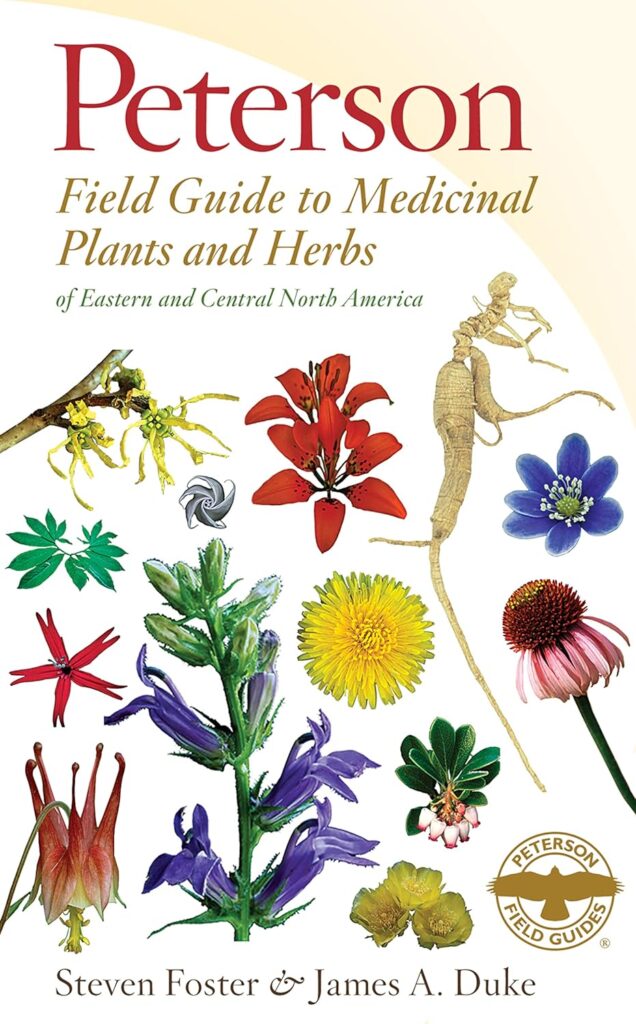
Choosing the Right Natural Remedies Book for Your Needs
For Complete Beginners
Start with Rosemary Gladstar’s Medicinal Herbs: A Beginner’s Guide to build confidence with simple, achievable projects using readily available herbs. Follow with The Complete Medicinal Herbal by Penelope Ody for broader coverage and visual guidance. Once comfortable with basics, add Australian Medicinal Plants by Lassak & McCarthy to understand native species applicable to your region.
This progression moves from accessible confidence-building through broader herbal knowledge to Australia-specific expertise. Beginners often feel overwhelmed by dense technical texts, starting with approachable guides builds competence before tackling more advanced material. Allow at least a full growing season working with each book’s guidance before progressing to the next level.
For Growers and Gardeners
The Complete Herbal Tutor by Anne McIntyre provides excellent cultivation guidance alongside therapeutic information, helping you understand what each plant needs to thrive. Combine this with locally-focused Australian resources for climate-specific growing advice. Australian gardeners should also consult regional gardening guides alongside herbal texts, as successful medicine-making depends on successfully growing or sourcing quality plant material first.
Pay attention to each plant’s water requirements, heat tolerance, frost sensitivity, and soil preferences. Many European and American herbs described in international books need significant adaptation for Australian conditions. Mediterranean herbs generally thrive in Australian climates, particularly southern regions. Asian herbs suit tropical and subtropical areas but may need protection in temperate zones. Cool-climate herbs require afternoon shade and consistent moisture in hot Australian regions.
For Medicine Makers and Practitioners
James Green’s The Herbal Medicine-Maker’s Handbook and David Hoffmann’s Medical Herbalism provide the technical depth needed for serious practice. These work best combined with Australian-specific plant knowledge from Cheryll Williams’ Medicinal Plants in Australia series. Practitioners should also familiarise themselves with Therapeutic Goods Administration regulations around herbal medicine manufacture and supply in Australia.
Understanding extraction ratios, alcohol percentages, appropriate menstrua for different plant constituents, and quality control measures distinguishes professional-quality medicine-making from casual home remedies. These advanced texts assume readers have foundational knowledge and serious intent, not suitable as first herbal books but invaluable once you’re committed to deeper practice.
For Foragers and Native Plant Enthusiasts
Cheryll Williams’ complete Medicinal Plants in Australia series becomes essential, particularly Volume 3 covering toxic species. Supplement with local botanical field guides for your specific region and consider joining Australian herbalist associations or foraging groups for hands-on identification training. Never rely solely on books for identifying plants you intend to ingest, seek experienced guidance for wild harvesting until you’re absolutely confident in your identification skills.
Australian bushland contains numerous toxic species, some without clear antidotes. Many Australian plants have similar appearances to benign species but carry serious toxicity risks. Professional guidance from experienced local herbalists, botanical gardens offering plant identification courses, and field trips with knowledgeable foragers should supplement book learning. The combination of book study and hands-on training with experts creates safe, confident foraging practice.
Building Your Herbal Medicine & Natural Remedies Book Library Strategically
A well-rounded herbal library balances Australian-specific references with adaptable international classics. Start with one or two foundational books suited to your current knowledge level and specific interests, whether growing, medicine-making, or therapeutic applications. Add books progressively as your skills develop rather than accumulating references faster than you can meaningfully study them.
Consider both print and digital resources. Print books offer advantages for field identification, don’t require batteries or screens in outdoor conditions, easier for detailed study and note-taking, and build a permanent reference library. However, digital databases like Atlas of Living Australia, PlantNET (NSW flora database), and Australia’s Virtual Herbarium provide complementary resources with search capabilities, updated taxonomy, and distribution mapping that print books can’t match.
Supplement books with credible online resources. The Australian Traditional Medicine Society offers practitioner standards and public information. Therapeutic Goods Administration provides regulatory guidance on herbal medicines. State herbaria provide plant identification services and botanical expertise. Regional herbalist groups offer workshops, plant walks, and community knowledge-sharing.
Consider investing in local workshops or short courses alongside book study. Many Australian herbalists and botanical gardens offer weekend workshops on plant identification, medicine-making, or specific therapeutic applications. Hands-on learning with experienced practitioners accelerates your development beyond what solitary book study achieves. The combination of theoretical knowledge from books and practical skills from courses creates well-rounded competence.
Conclusion
Building herbal medicine knowledge suited to Australian conditions requires combining region-specific Australian references with carefully selected international texts that genuinely apply to our climate and available plants. Cheryll Williams’ Medicinal Plants in Australia series and Lassak & McCarthy’s Australian Medicinal Plants provide essential native plant knowledge, while Anne McIntyre’s The Complete Herbal Tutor and James Green’s Handbook contribute depth on theory and practice that transcend geographic boundaries.
Start with books matching your current skill level and specific interests. Progress systematically from beginner-friendly introductions through comprehensive references to advanced clinical texts as your knowledge and experience grow. Combine book learning with hands-on practice, start small with a few well-understood plants, seek guidance from experienced local herbalists, and always prioritise safe identification and appropriate use. The investment in quality references pays dividends through years of reliable guidance as your herbal medicine practice deepens.
Safety Note: This article provides information on educational resources about herbal medicine. It does not constitute medical advice. Always consult healthcare professionals for medical concerns, research potential interactions with medications, and seek expert guidance for plant identification before consuming any wild or cultivated plants. Many Australian native plants are toxic, proper identification and preparation knowledge is essential for safety.
As an Amazon Associate, Grainshed earns from qualifying purchases. This comprehensive guide provides analysis to help Australian property owners. Prices are relevant to the time of writing and may differ.


